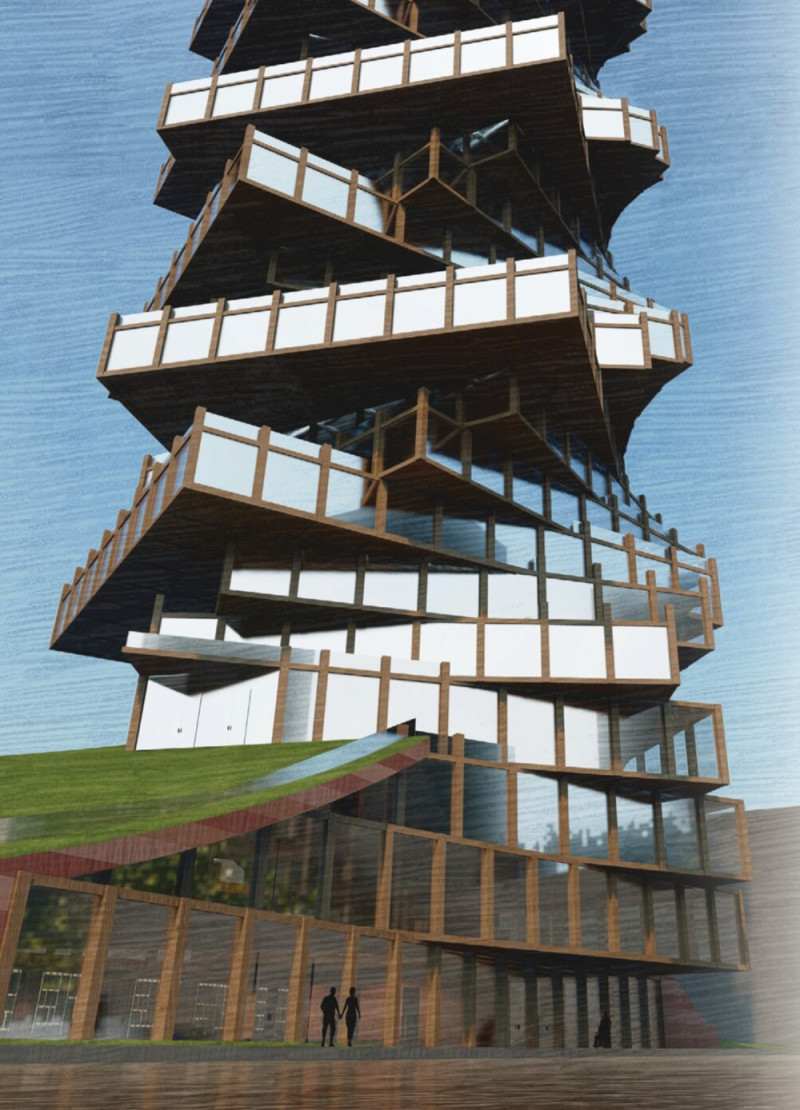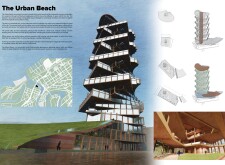5 key facts about this project
The Urban Beach is situated on the waterfront of the Cuyahoga River in Cleveland, Ohio. It aims to break down social barriers while enhancing urban life for residents and visitors. The design focuses on creating open and accessible spaces that encourage community engagement, allowing people to gather without the barrier of costs. The overall concept combines various functions, aiming to design a lively hub that contributes positively to the city’s environment.
Structure and Materials
A key feature of the design is the rammed earth unit circulation core, which serves as the main structural element. This core supports the building while incorporating natural materials into the design. Surrounding it are glass curtain walls that provide views of the outside and enhance the feeling of openness. This thoughtful approach fosters interaction between the inside and outside, creating areas where people can connect.
Public and Communal Spaces
On the ground level, the grand lobby offers various functions including parking, a food court, and areas for seating. A sloping green roof gently descends to meet the waterfront, revealing the rammed earth base as it rises. This thoughtful design bridges the built environment with nature, improving how people experience the space.
Vertical Integration
Moving above the lobby, office spaces are arranged in a spiral pattern that optimizes light and views. Each floor features terraces and green areas, promoting a productive atmosphere. Additionally, large balconies on every third floor encourage gatherings, reinforcing the focus on community interaction.
Green Roof and Community Access
At the top of the building, a publicly accessible green roof provides wide views of downtown Cleveland. This space improves the project's overall profile and supports the integration of greenery in urban life. It allows people to relax and engage socially while enjoying an elevated perspective of the city.
Sustainable choices in materials, such as rammed earth and cross-laminated mass timber, align with the goal of environmental responsibility. These materials are selected for their durability and aesthetic appeal. The attention to material choice enhances the project's commitment to fostering social connections while being mindful of ecological impacts.



















































